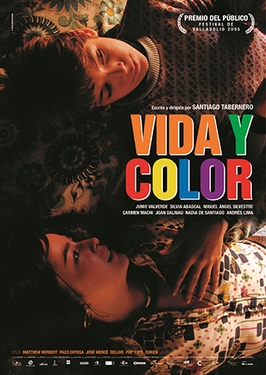Life and Colour
Life and Colour
Life and colour are intricately intertwined concepts that play a fundamental role in the natural world. The presence of colour in living organisms serves various purposes, from attracting mates to warning predators. This article explores the relationship between life and colour, highlighting the significance of colour in different aspects of biology.
Evolutionary Significance[edit | edit source]
Colour in living organisms has evolved through natural selection to serve specific functions. For example, the bright and vibrant colours of flowers attract pollinators such as bees and butterflies, facilitating the process of pollination. In contrast, some animals exhibit warning colours, known as aposematism, to deter predators by signaling toxicity or danger.
Biological Pigments[edit | edit source]
Biological pigments are molecules that give colour to living organisms. Chlorophyll, for instance, is a green pigment found in plants that plays a crucial role in photosynthesis. Other pigments, such as carotenoids and melanin, contribute to the diverse array of colours seen in nature.
Colouration in Animals[edit | edit source]
Animals display a wide range of colours for various purposes. Camouflage, for instance, allows animals to blend into their surroundings, providing protection from predators. In contrast, bright colours in birds and insects are often used for mate attraction and species recognition.
Colouration in Plants[edit | edit source]
Plants use colour as a means of communication and reproduction. Flowering plants have evolved an array of colours to attract pollinators and ensure successful pollination. Additionally, some plants exhibit colourful fruits to entice animals to disperse their seeds.
Human Perception of Colour[edit | edit source]
The human perception of colour is a complex process involving the interaction of light with specialized cells in the eyes. The three types of cone cells in the retina enable humans to perceive a wide spectrum of colours. Colour vision plays a crucial role in various aspects of human life, from art and design to psychology and culture.
Conservation and Colour[edit | edit source]
The conservation of biodiversity often involves the preservation of species with unique colouration. Endangered species with distinctive colours may face additional threats due to illegal trade or habitat destruction. Conservation efforts aim to protect these species and their vibrant colours for future generations.
Conclusion[edit | edit source]
In conclusion, the relationship between life and colour is a fascinating aspect of biology that showcases the diversity and beauty of the natural world. From the evolutionary significance of colour to its role in communication and perception, colour plays a vital role in shaping the interactions between living organisms. Understanding the intricate connections between life and colour enhances our appreciation of the wonders of nature.
Navigation: Wellness - Encyclopedia - Health topics - Disease Index - Drugs - World Directory - Gray's Anatomy - Keto diet - Recipes
Search WikiMD
Ad.Tired of being Overweight? Try W8MD's physician weight loss program.
Semaglutide (Ozempic / Wegovy and Tirzepatide (Mounjaro / Zepbound) available.
Advertise on WikiMD
WikiMD is not a substitute for professional medical advice. See full disclaimer.
Credits:Most images are courtesy of Wikimedia commons, and templates Wikipedia, licensed under CC BY SA or similar.Contributors: Prab R. Tumpati, MD

